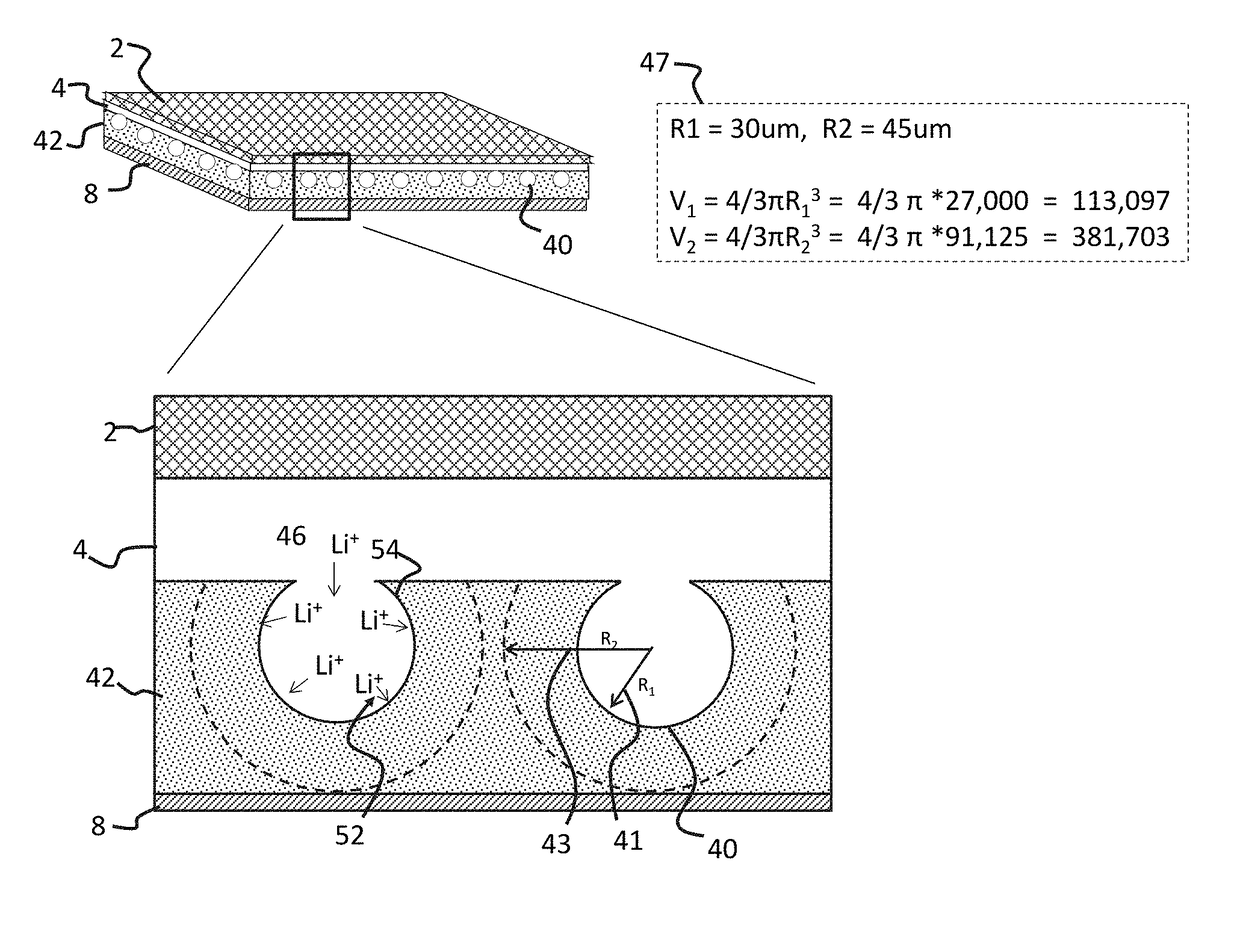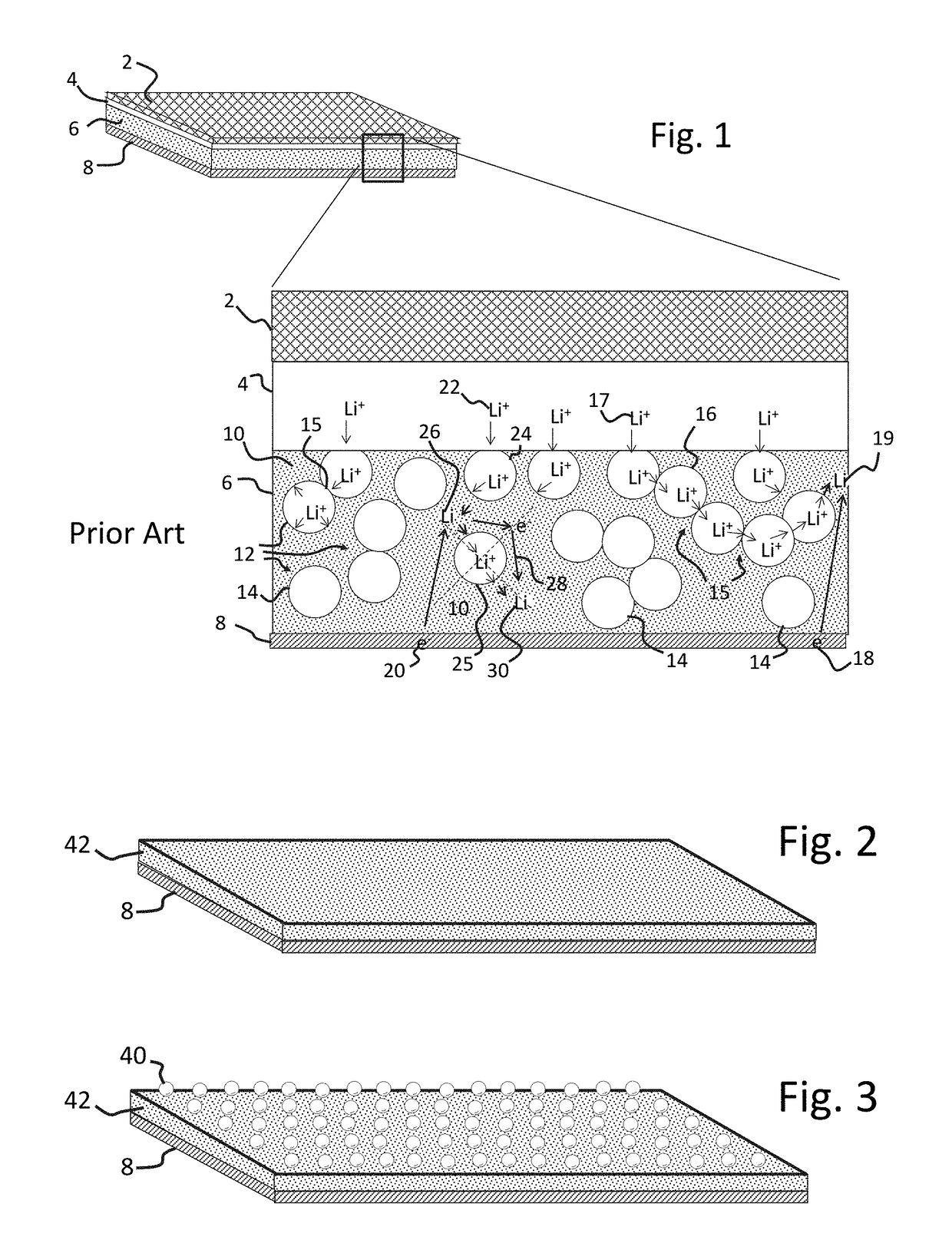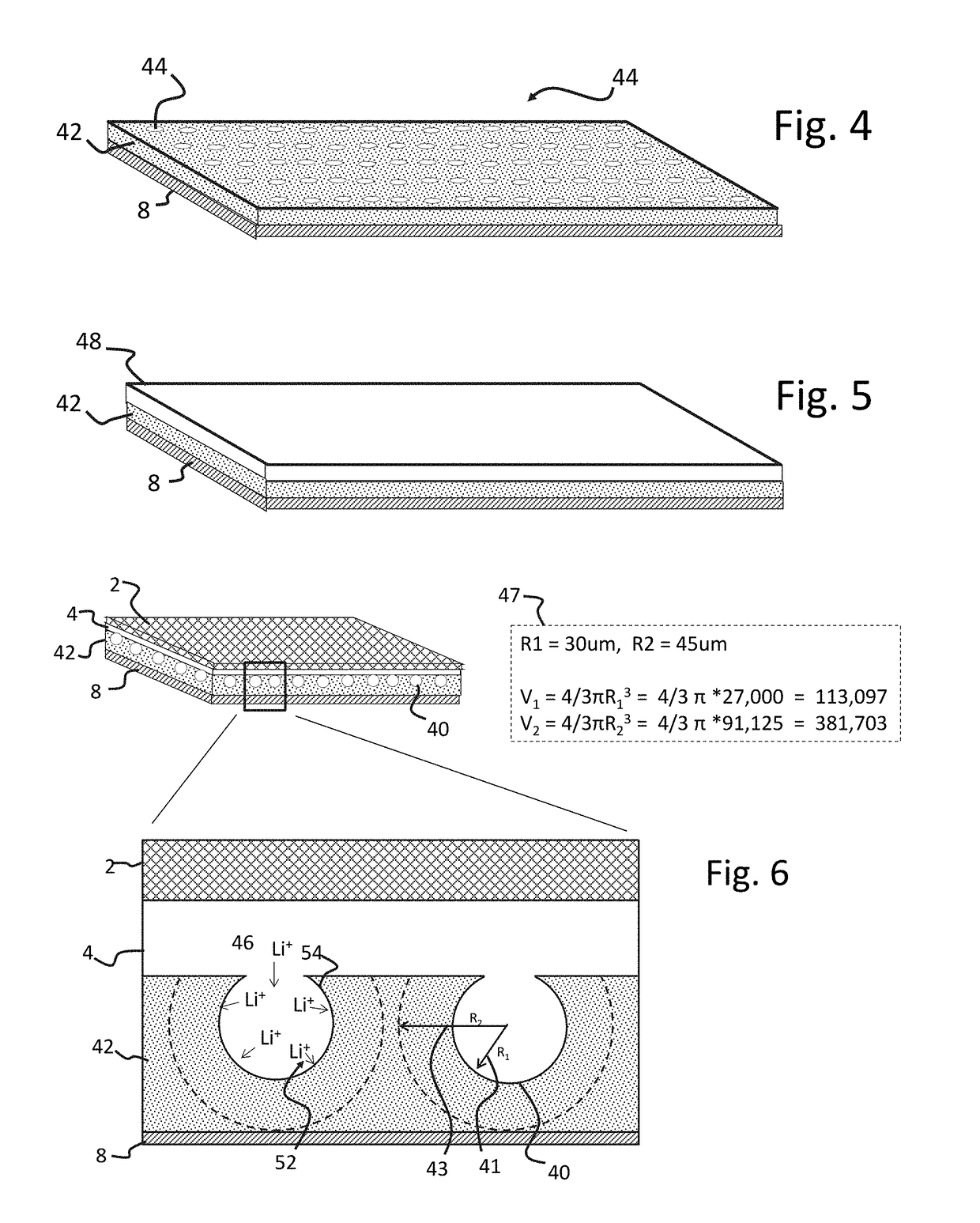Solid-state batteries, separators, electrodes, and methods of fabrication
a technology of solid-state batteries and separators, which is applied in the direction of non-aqueous electrolyte cells, cell components, electrochemical generators, etc., can solve the problems of high cost of fabrication of batteries based on this technology, low capacity, explosion, etc., and achieve high conductivity
- Summary
- Abstract
- Description
- Claims
- Application Information
AI Technical Summary
Benefits of technology
Problems solved by technology
Method used
Image
Examples
example 1
on and Analysis of Solid Electrolytes
[0093]A high conductivity electrolyte, LLZO (lithium lanthanum zirconium oxide (garnet,
[0094]Li7La3Zr2O12)), was prepared as follows. 3.8 g of LiOH, 10 g of La2O3, 6 g of ZrO, 0.27 g of Al and 1.12 g of TaO were milled in THF. All components were obtained from commercial sources. The resulting mixture was dried under vacuum and then heated at 715° C. for 1 hour and at 900° C. for 3 hours. The resulting powder was pressed in a Carver press to form a pellet which was subsequently sintered at 1200° C. in oxygen. Thus, sintered pellets were removed from the furnace and ground into powder to provide the desired LLZO.
[0095]LLZO impedance measurements are shown in FIGS. 8a and 8b. The graph in FIG. 8a represents the whole measured spectrum and the graph in FIG. 8b focuses on the high frequency portion. Based on these data, the estimated ionic conductivity of the LLZO is 5×10−4 S / cm. Large LLZO particles are obtained by hot pressing LLZO powder at 1200° ...
example 2
on of Cell Using NCM Cathode with Low Melting Temperature Electrolyte
[0100]A mixture was prepared by high energy milling 4 g (61%) NCM active cathode material powder, (36 wt %) 2.4 g nano-sized (<0.3 μm average particle size) LLZO electrolyte (prepared in Example 1) and 0.2 g (3 wt %) polymer binder (PVB) with 1.5 ml of ethanol and 1.5 ml of xylene solvents. The mixture was then cast onto a non-stick, polyester sheet material and allowed to dry. Multiple castings were made and were subsequently calendared together to form a single multilayered sheet, with each layer being approximately 50 μm thick. Discs were punched from the sheet and then heated at 400° C. for 3 hours to remove the binder and then at 850° C. for 30 minutes to obtain a porous, sintered, cathode disc.
[0101]After sintering, a slurry of low melting temperature electrolyte was cast onto one surface of the cathode disc. The slurry was formed by mixing 0.2 g Li3BO3:Li2CO3 (prepared in Example 1) with 2 g of isopropanol s...
example 3
on of Cell with NCM Cathode, Low Melting Temperature Electrolyte and High Surface Area Separator Interface
[0104]A mixture was prepared by high energy milling 4 g (61%) NCM active cathode material powder, (36 wt %) 2.4 g nano-sized (<0.3 μm average particle size) LLZO electrolyte (prepared in Example 1) and 0.2 g (3 wt %) polymer binder (PVB) with 1.5 ml of ethanol and 1.5 ml of xylene solvents. The mixture was cast onto a non-stick, polyester sheet material and allowed to dry. Multiple layers of the casting were calendared together into a single sheet for a more uniform distribution of particles, with each layer being approximately 100 μm thick prior to calendaring.
[0105]An LLZO separator was prepared by mixing nano-LLZO powder, approximately 25 nm, with large particle LLZO powder, 25 μm to 45 μm, in a 2 g / 2 g (50 / 50 wt %) ratio with 0.28 g 7 wt % polymer binder (PVB), 1.6 ml of ethanol, and 1.6 ml of xylene solvents. The resulting slurry was doctor blade cast on to a non-stick surf...
PUM
 Login to View More
Login to View More Abstract
Description
Claims
Application Information
 Login to View More
Login to View More - R&D
- Intellectual Property
- Life Sciences
- Materials
- Tech Scout
- Unparalleled Data Quality
- Higher Quality Content
- 60% Fewer Hallucinations
Browse by: Latest US Patents, China's latest patents, Technical Efficacy Thesaurus, Application Domain, Technology Topic, Popular Technical Reports.
© 2025 PatSnap. All rights reserved.Legal|Privacy policy|Modern Slavery Act Transparency Statement|Sitemap|About US| Contact US: help@patsnap.com



